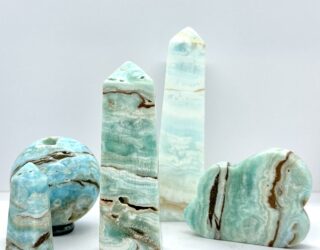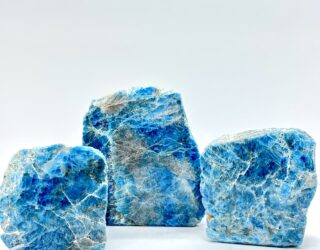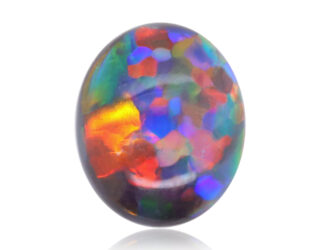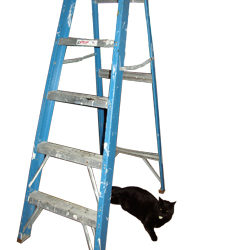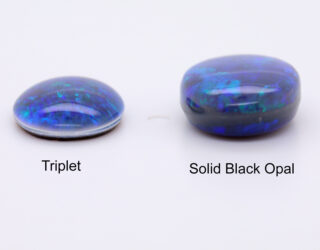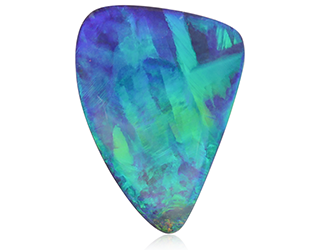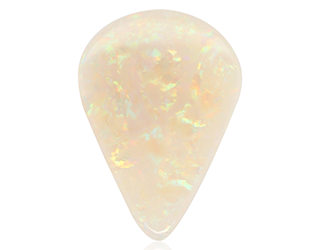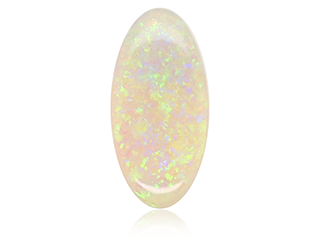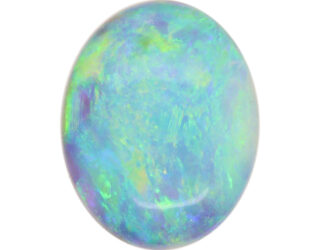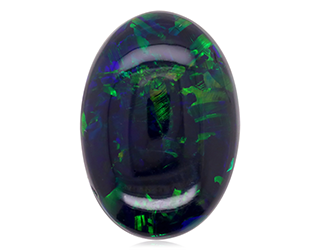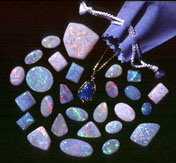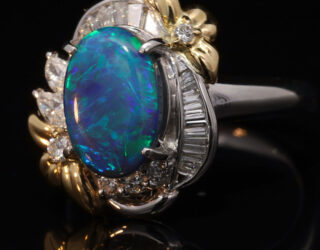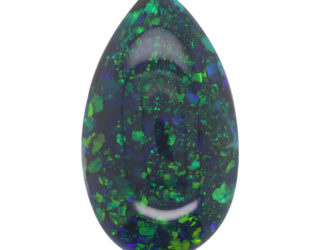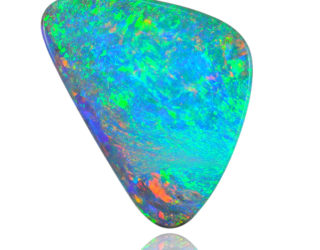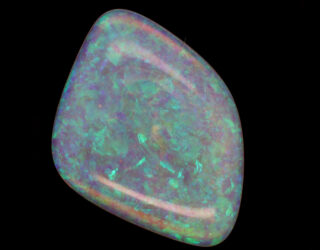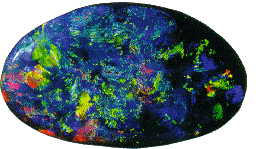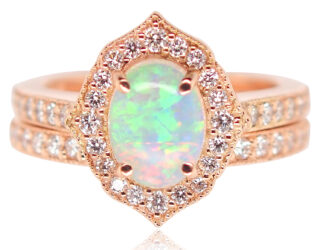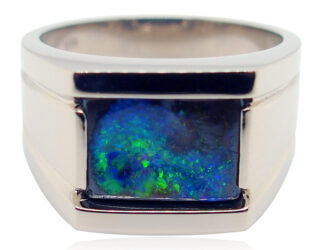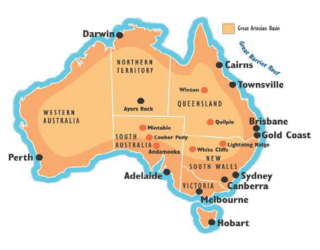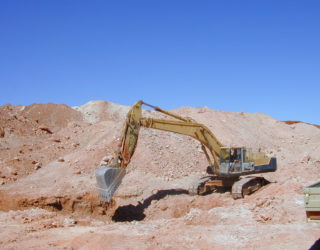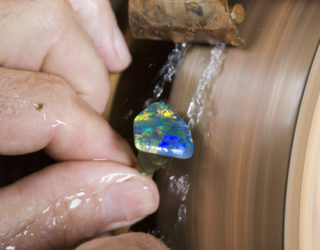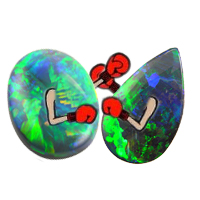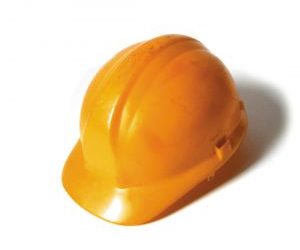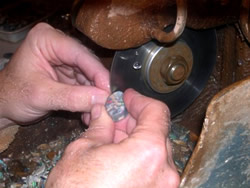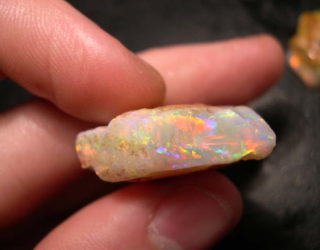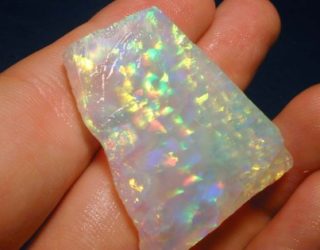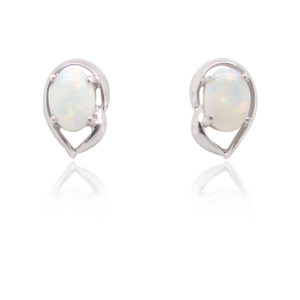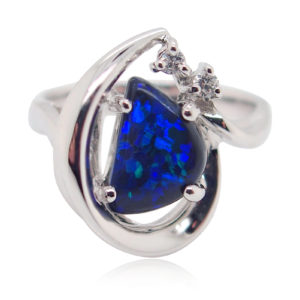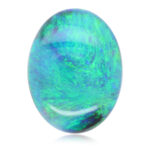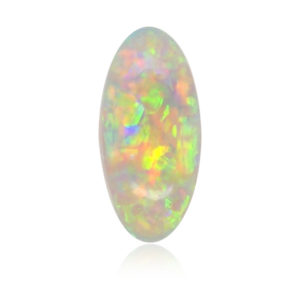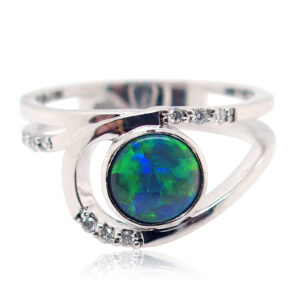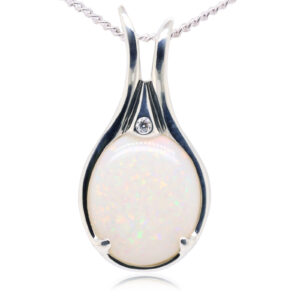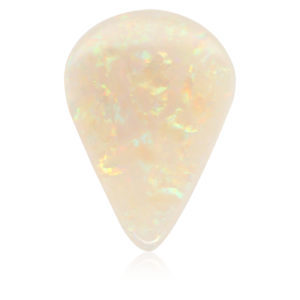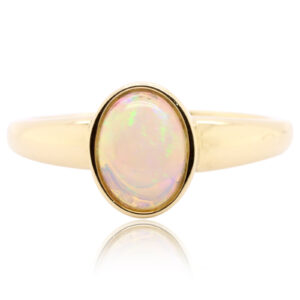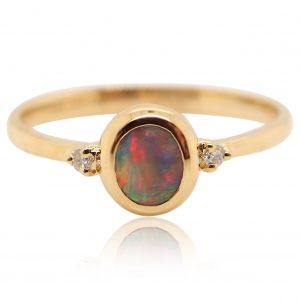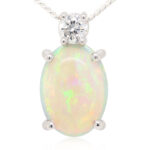FAQ : What are the different types of opals? What is Black Opal? What is Crystal Opal? What is Boulder Opal? What is White Opal? What is the difference between the types of opals? What are the different types of opal? What is a doublet? What is a triplet? ‘What is synthetic opal? What is imitation opal?

Black Opal – Black opal is characterised by a dark body tone causing brightness of colour which is unmatched by lighter opals. Black Opals are usually mined in Lightning Ridge, New South Wales, and are the most famous, and sought-after type of opal. The term ‘black opal’ does not mean that the stone is completely black (a common mistake), it simply means the stone has a dark body tone in comparison to a white opal. Learn more about black opals.
White Opal – Also known as ‘milky opal’, white opal features light white body tones, and is mined in South Australia. White opal is more common and because of its body tone, generally does not show the colour as well as black opal. Nevertheless, white opals can still be absolutely magnificent in colour if a good quality stone is found. Learn more about white opals.
Boulder Opal – Boulder opal forms on ironstone boulders in Queensland. This type of opal is often cut with the ironstone left on the back, as the opal seam is usually quite thin. Leaving the ironstone on the back means that boulder opal can be very dark and beautiful in colour. The opal forms within the cavities of the boulders in both vertical and horizontal cracks. Boulders vary in shape and size, from as small as a pea, to as big as a family car. Boulder Opal has a tendency to cleave; when cleaved the “split” leaves two faces of opal, with a naturally polished face. Learn more about boulder opals.
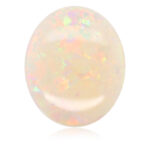
Crystal Opal – Crystal opal is any of the above kind of opal which has a transparent or semi-transparent body tone – i.e. you can see through the stone. Crystal opal can have a dark or light body tone, leading to the terms “black crystal opal” and “white crystal opal”. Learn more about crystal opals.
‘Fire Opal’ – Many people ask us about ‘fire opal’ so I thought I’d include this one. Fire opal is a term not commonly used within Australia but is quite common amongst Americans. Technically, the main type of opal known as ‘fire opal’ is Mexican Fire Opal, mined in Mexico, which usually has a distinct orange colouring. However, the term has been used to describe any Australian kinds of opal (normally a black opal shows it best) which displays a significant amount of red colouring. Red of course is the rarest colour, so these are quite valuable. Recent discoveries in Western Australia have unearthed an Australian form of ‘Fire Opal’ – an exothermic type of opal.
Matrix opal – Matrix opal is where the opal occurs as a network of veins or infilling of voids or between grains of the host rock (ferruginous sandstone or ironstone). Matrix comprises precious opaline silica as an infilling of pore spaces in silty claystone or ironstone. It generally shows fine pinfire colour in the natural state.
Andamooka matrix opal may be enhanced by soaking the specimen in a sugar solution and then boiling in acid to deposit carbon in the available pore spaces, resulting in a dark background.
Natural oulder opal matrix is another kind of matrix opal, found at Yowah in Queensland, which in its natural state consists of brown ironstone with small deposits of opal interspersed. This kind of opal is not treated.
Yowah nuts – Found in the far South Western mines at Yowah in Queensland, Yowah nuts are ironstone concretions resembling ‘nuts’ which contain precious opal in their centre. Upon cracking or slicing the Yowah nut, the precious opal is revealed.
Welo Opal – an Ethiopian form of opal, which can produce rich colour. This material is known as hydrophane opal, as it is a porous gem, which can absorb moisture (over several hours) and cause the Welo Opal to change appearance. ‘Dewatering’ of the opal can take anywhere between a few days to a few weeks to occur. Ethiopian Opals can have durability issues due its hydrophane property (the absorbtion of water can possibly cause cracking). Only a fairly recent discovery (2008).
Synthetic or Man-made Stones
Synthetic opal – Opaline silica produced in the laboratory and having a similar structure to that of precious opal. The most well-known form of synthetic opal is Gilson Opal, and you can learn more about identifying this type of opal in our synthetic opal article.
The following differences can be seen between natural and synthetic opal;
- Synthetic opals generally show brighter colours, and colour patches are often larger than in natural opals.
- Colour grain boundaries are generally highly irregular in synthetic opal.
- Within each colour grain in synthetic opal there are numerous sub-grains that produce a distinctive snakeskin pattern.
- Synthetic material generally shows a more ordered array of colours since artificial material does not duplicate the intricate pattern of natural opal.
Imitation opal – A material such as coloured tinsel set in clear plastic or epoxy resin. (These imitations are virtually worthless and not very convincing to a trained eye).
Doublets & Triplets – Doublets and triplets are partially man-made stones, consisting of only a paper-thin slice of opal cemented to a black backing. Triplets have, in addition to this, a clear quartz or glass capping over the top to magnify the colour, protect the stone, and give it a cabochon (domed) appearance. The idea of doublets and triplets is to imitate valuable black opals at a fraction of the cost.
The following diagrams demonstrate the differences between doublets, triplets, and solid opals;

Solid (cabochon) – Most cutters prefer to produce the opal as a solid cut ‘en cabochon’ if the gem is sufficiently thick. The opal is left in its natural state and simply shaped and polished on the cutter’s wheel.

Doublet – A thin veneer of opal may show enhanced colour with a dark backing of either black or grey silica material, or a thin slice of common opal cemented to the back of the opal with epoxy resin.

Triplet – A slice of quartz may be used to cap the thin opal veneer to protect it from abrasion. This produces a three-tiered gemstone known as a triplet, which can often display brilliant colours. It is a cheaper method of presentation and can enhance the appearance of the opal.
Doublets and triplets are a good affordable substitute for solid black opals, however their disadvantage is their susceptibility to water penetration. Due to the fact that the layers are attached with glue, a doublet or triplet may become water-logged if immersed in water repeatedly. If this happens, the stone will take on a ‘foggy’ appearance.
Sources:
